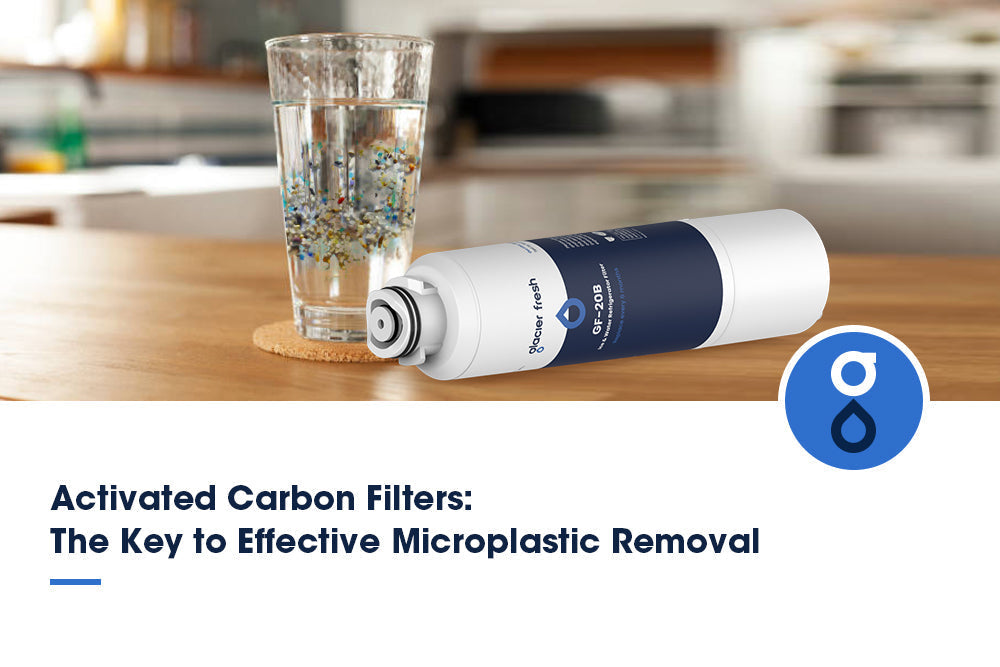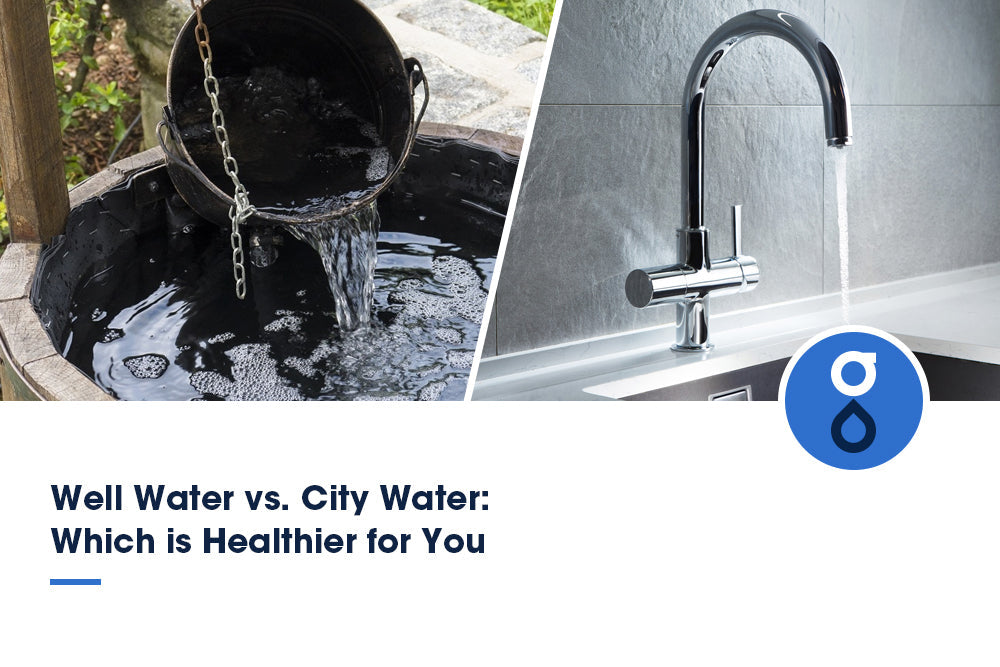Table of Contents:
The problem of microplastic pollution
How activated carbon filter work?
How can activated carbon filters help remove microplastics from water?
Factors influencing the effectiveness of activated carbon filters in removing organic compounds
FAQs
Conclusion
Are you concerned about the growing problem of microplastic pollution in our water sources? Activated carbon filters may be the solution you've been looking for. These filters are highly effective at removing microplastics, those tiny plastic particles that are polluting our oceans, rivers, and even our drinking water. You can play a part in reducing this harmful pollution and protecting the environment by using activated carbon filters.
So how do activated carbon filters work? These filters are made from carbon that has been specially treated to create a large surface area with tiny pores. When water passes through these filters, the microplastic particles become trapped in the pores of the activated carbon.
This means that when you use water treated with activated carbon filters, you can be confident that you consume water free from microplastics. With the increasing awareness of the harmful effects of microplastics on our health and the environment, the use of activated carbon filters is becoming more popular as a reliable and effective method of microplastic removal.
The problem of microplastic pollution
Microplastic pollution is wreaking havoc on our planet, but are activated carbon filters the solution we've been searching for?

This environmental issue has gained significant attention recently due to its detrimental impact on aquatic ecosystems and marine life. Sources of microplastic pollution include the breakdown of larger plastic items, such as bottles and bags, as well as the release of microbeads from personal care products. These tiny plastic particles pose a severe threat to marine organisms, as they can be ingested and accumulate in their bodies, leading to potential health risks.
One of the main concerns associated with microplastic ingestion is the transfer of toxic chemicals that can adhere to these particles. When marine organisms consume microplastics, these chemicals can leach into their tissues, potentially causing long-term health problems. Additionally, microplastics can block the digestive systems of marine animals, leading to reduced nutrient absorption and poor health.
This highlights the urgent need for effective methods of microplastic removal to mitigate the environmental and health risks they pose. Activated carbon filters have emerged as a potential solution to address microplastic pollution. These filters are designed to trap and remove contaminants, including microplastics, from water sources. The porous structure of activated carbon allows it to absorb a wide range of organic compounds, including microplastics.
By incorporating activated carbon filters into wastewater treatment systems and household filters, we can remove many microplastics before they enter natural water bodies. However, it is essential to note that activated carbon filters effectively remove microplastics but are not a standalone solution. Implementing alternative methods of microplastic removal and policy interventions, such as reducing plastic waste and banning certain plastic products, are also necessary to combat this pervasive issue.
How activated carbon filters work?

By trapping tiny particles, activated carbon filters effectively eliminate harmful substances from the environment. These filters work through an adsorption process, where the pollutants adhere to the surface of the activated carbon. The filter's effectiveness depends on the activated carbon's surface area, which is maximized through the use of small particles or granules.
One key factor in the efficiency of activated carbon filters is the surface area available for adsorption. Activated carbon has a large internal surface area due to its porous structure, which provides ample space for pollutants to attach. The more surface area available, the more pollutants can be trapped and removed from the water or air. This is why activated carbon filters often comprise tiny particles or granules to increase the surface area and enhance the filtration process.
Different types of activated carbon can be used in filters, each with its characteristics. Powdered activated carbon is finely ground and has a high surface area, effectively removing many contaminants. Granular activated carbon, on the other hand, has larger particles and is commonly used in water filters. Choosing the correct type of activated carbon is essential based on the specific pollutants that need to be removed. While activated carbon filters are highly effective in removing many pollutants, they have limitations and challenges. Over time, the pores of the activated carbon can become clogged with pollutants, reducing its efficiency.
However, activated carbon can be regenerated through various methods, such as heating or washing, to restore its adsorption capacity. Additionally, activated carbon filters may not effectively remove certain pollutants, such as dissolved metals or organic compounds. Therefore, it's essential to understand the limitations of activated carbon filters and consider other filtration methods if necessary.
How can activated carbon filters help remove microplastics from water?
One fascinating way activated carbon filters can assist in purifying water is by tackling the issue of microplastic contamination. These filters work by utilizing an adsorption process, where the microplastics are attracted and trapped on the surface of the activated carbon material. This filtering mechanism removes many microplastic particles, including large and small ones.
The adsorption process of activated carbon filters is highly effective in capturing microplastics due to their large surface area and porous structure. As water flows through the filter, the microplastics come into contact with the activated carbon, which has a high affinity for organic compounds. The microplastics adhere to the carbon surface, effectively removing them from the water.
Incorporating activated carbon filters like GE XWF water filter in water purification systems can be a valuable step toward reducing the presence of microplastics in our water sources. The adsorption process employed by these filters allows for the efficient removal of microplastic particles, making them effective in combating microplastic contamination.
However, it is essential to recognize that the long-term effectiveness of these filters relies on proper maintenance and replacement of the activated carbon media. By implementing a combination of filtration methods and source control measures, we can further minimize the environmental impact of microplastics and safeguard the quality of our water resources.
Factors influencing the effectiveness of activated carbon filters in removing organic compounds
Contact time

Contact time refers to the water's duration in contact with the activated carbon filter. The longer the contact time, the greater the opportunity for the microplastics to come into contact with the activated carbon and be adsorbed by its porous structure. As water flows through the filter, the microplastics are attracted to the activated carbon and become trapped within its pores. The longer the contact time, the more microplastics can be captured and removed from the water. This makes contact time a crucial factor in determining the effectiveness of activated carbon filters in removing microplastics.
Flow rate
Regarding flow rate, finding the perfect balance for optimal performance in removing microplastics is essential. A high flow rate may seem appealing as it allows for faster filtration, but it can compromise the effectiveness of activated carbon filters. At a high flow rate, water passes through the filter too quickly, reducing the contact time between the microplastics and the carbon particles. This means the carbon particles have less time to adsorb the microplastics, leading to lower removal efficiency.
On the other hand, a low flow rate can lead to longer contact time, allowing for better adsorption of microplastics by the activated carbon. However, an extremely low flow rate can result in clogging and reduced filter lifespan. Therefore, finding the right balance is crucial.
Microplastics concentration

Imagine a swirling sea of tiny plastic particles, their concentration increasing as they flow downstream. Now picture an activated carbon filter silently removing these microplastics from the water. Activated carbon filters are highly effective at trapping and removing microplastics due to their porous structure and adsorption capabilities.
As the water passes through the filter, the carbon material attracts and binds to the microplastics, effectively removing them from the water stream. The concentration of microplastics in water is crucial in determining the effectiveness of activated carbon filters. Careful consideration of the microplastic concentration and other relevant factors ensures the selection of the most suitable filtration method for providing clean and safe drinking water.
Regular maintenance and replacement
Regular maintenance is vital for keeping your filters effective in removing microplastics. Following the manufacturer's instructions and cleaning or replacing the filters at the recommended intervals is recommended. This will ensure that the filters are free from clogs or blockages that can hinder their ability to remove microplastics from the water effectively.
Regular maintenance not only helps to maintain the filter's efficiency but also extends its lifespan. Over time, activated carbon filters can become saturated with microplastics and other impurities, reducing their effectiveness. By regularly cleaning or replacing the filters, you can ensure that they continue to remove microplastics and efficiently provide you with clean water.
FAQs
Are activated carbon filters effective in removing other contaminants from water besides microplastics?
Activated carbon filters are not only effective in removing microplastics from water, but they're also efficient in removing other contaminants. These filters have been proven to be a sustainable solution for water purification. They can effectively remove various pollutants, including chemicals, heavy metals, and organic compounds.
Can activated carbon filters remove microplastics from all types of water sources?
Activated carbon filters can effectively remove microplastics from tap water and bottled water. Furthermore, activated carbon filters can remove microplastics from contaminated water sources such as lakes, rivers, and other water bodies where microplastic pollution is a concern.
Is it necessary to use activated carbon filters in combination with other water treatment methods to effectively remove microplastics?
To effectively remove microplastics from water, using activated carbon filters in combination with other water treatment methods is not necessary. Activated carbon filters are highly effective in trapping and removing microplastics from water sources. However, alternative filtration methods can also be used to achieve similar results.
Conclusion
Overall, activated carbon filters are a valuable tool in the fight against microplastic pollution. They offer a practical and affordable solution for removing microplastics from water sources, making our drinking water safer, and reducing the impact of microplastics on our ecosystem. By implementing these filters on a larger scale, we can make a significant difference in preserving our environment for future generations. Follow Glacier Fresh to find more water filtration solutions,

















